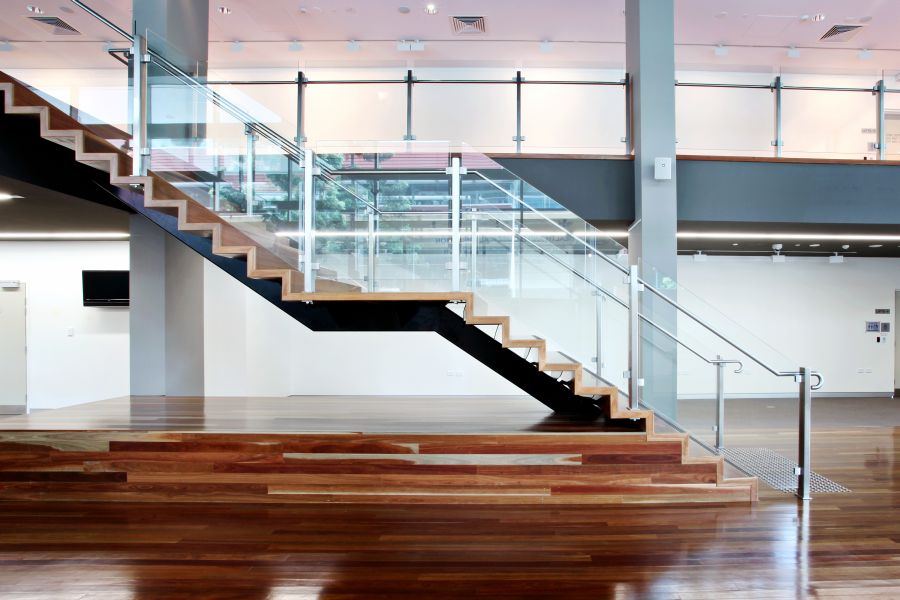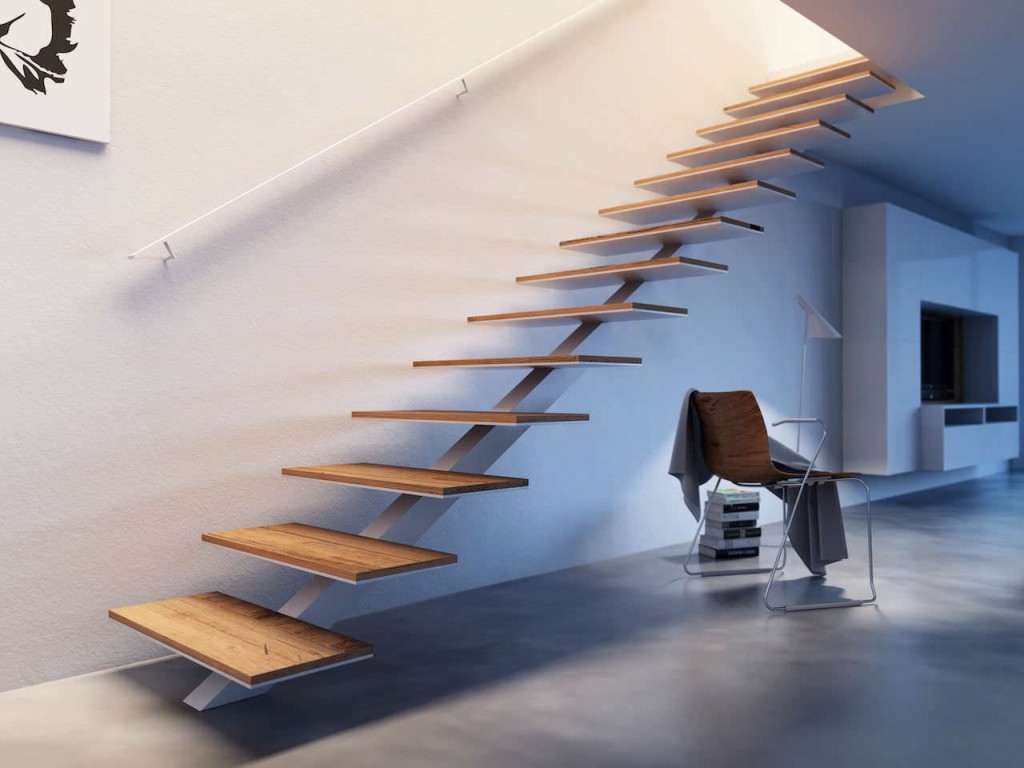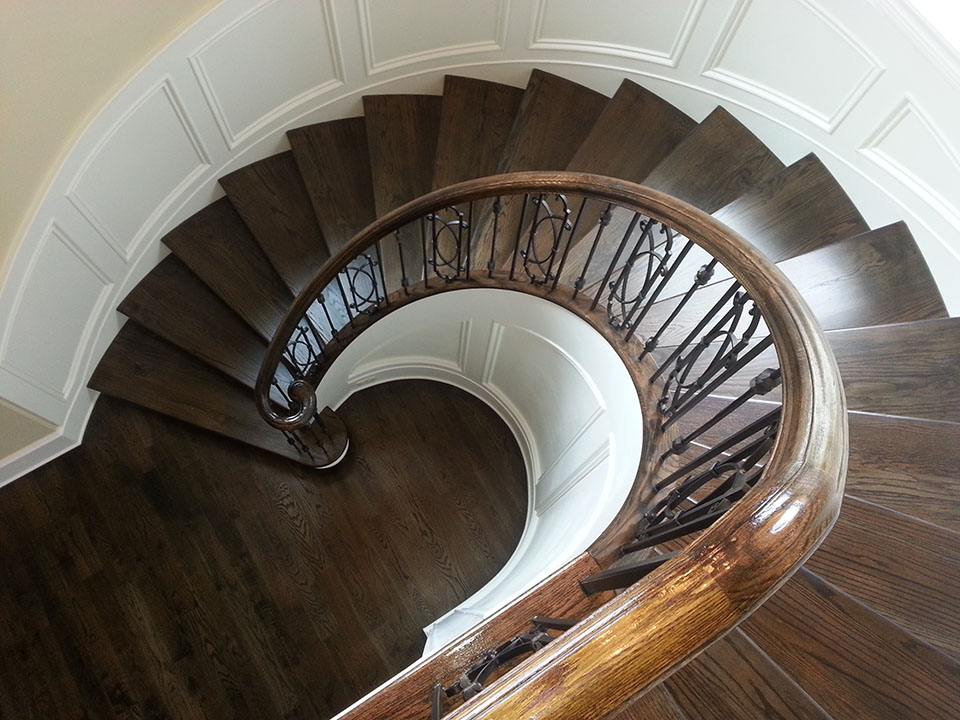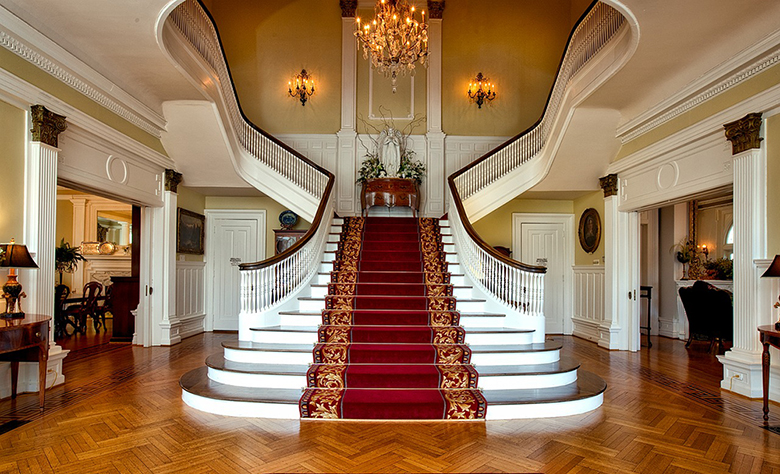Staircases are a crucial element of many homes. If you’re looking to renovate, there is a good chance that stairs will be one of the key factors that you will need to decide on, and understanding the fundamentals of staircase design is really useful in helping you make the right choice. This can also open up a world of possibilities you had never considered before, inspiring creativity and left-field thinking when it comes to stairs. Here are some of the most common types of staircase design that you might want to consider!
Winder Stairs
Winder stairs can be split into two main categories – single and double winders. The former turn at a 90 degree angle, while latter make a full 180 degree twist. Both types, however, do not have a landing, rather they employ wedge-shaped steps to make their turn. Winders encourage continuous movement and therefore promote more fluid designs with smooth angles and ornate embellishments.
Quarter Landing Stairs
Quarter landing stairs also turn 90 degrees, however they employ a large flat landing to do so. These are considered much safer as they provide a ‘rest point’ while ascending/descending the flight; a flat platform is also much easier to make the turn on than the wedge-like stairs present on winders. Aesthetically, quarter landing stairs encourage more rigid designs due to the right angled platform.
Intermediate Landing Stairs
Intermediate landing stairs are used in spaces where a straight flight is necessary, but where a platform is required due the length and height of the flight. The platform is usually quite short and sits about halfway up the flight. These kinds of staircases are common in outdoor locations.

Half Landing Stairs
Much like the double winder, half landing stairs turn 180 degrees, only they make their turn via a platform like quarter landing stairs. This kind of staircase is suitable for tighter spaces. Aesthetically, half landing stairs encourage modern designs with hard-lines and right angles.
Straight Stairs
Straight stairs are fairly self explanatory; they are single flights of straight steps. Although they are quite limiting in terms of form, the simplicity of straight stairs means that you can get a bit more creative in terms of look and embellishment. Working closely with an architect or steel fabricator, you can have a little bit of fun in this respect, opting for minimalist designs or playing around with different materials.

Spiral Stairs
Spiral stairs are also pretty self explanatory; they are also curved, but their arc turns 360°, often multiple times, resembling a spiral. Though an outdated design, spiral staircases are actually very useful in reaching a higher level with very minimal space available. They are also quite beautiful and, much like curved stairs, call for ornamental designs with patterned balustrades and creatively shaped steps.
Curved Stairs
Curved stairs resemble an arc, with no hard angles used to make the turn in the flight. They tend to favour aesthetics over functionality and call for more elegant designs. These kinds of stairs are often the focal point of a room and are often adorned with ornamental balustrades or other embellishments.

There you have it. Seven common types of staircase design to consider for your renovation. Despite their functionality, stairs can really compliment a space if implemented with a little creativity. Hopefully a few more ideas are floating around your head now.

